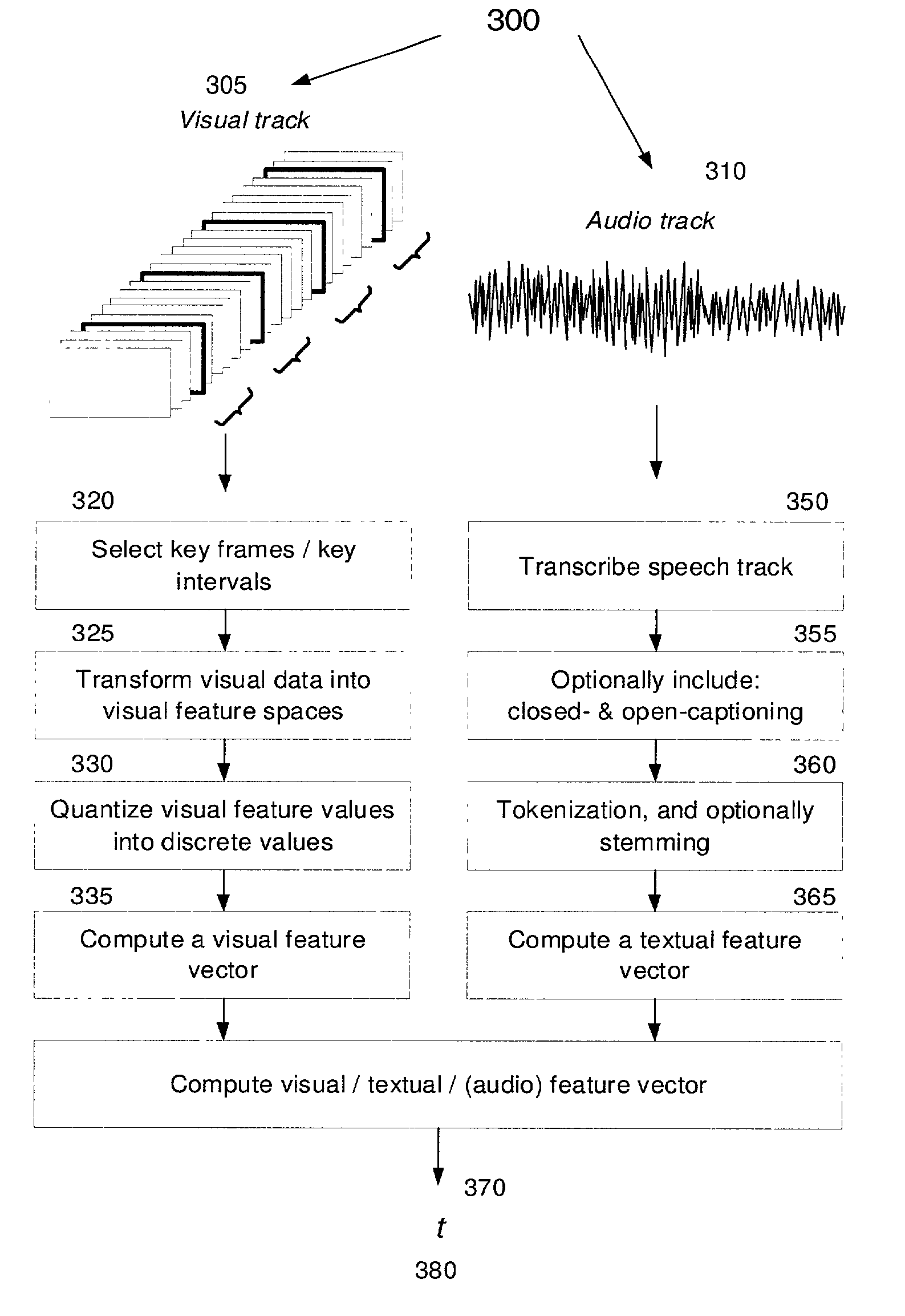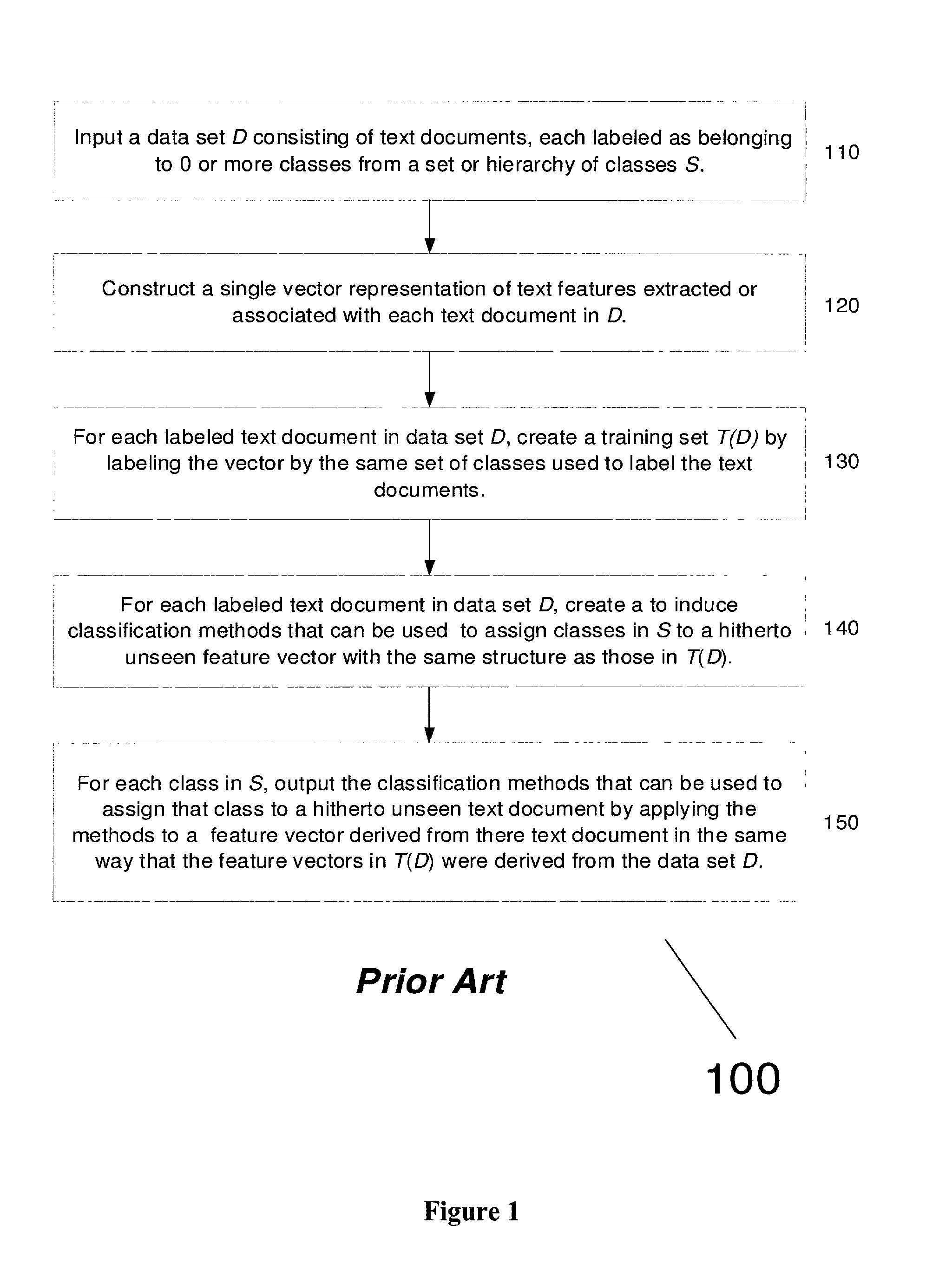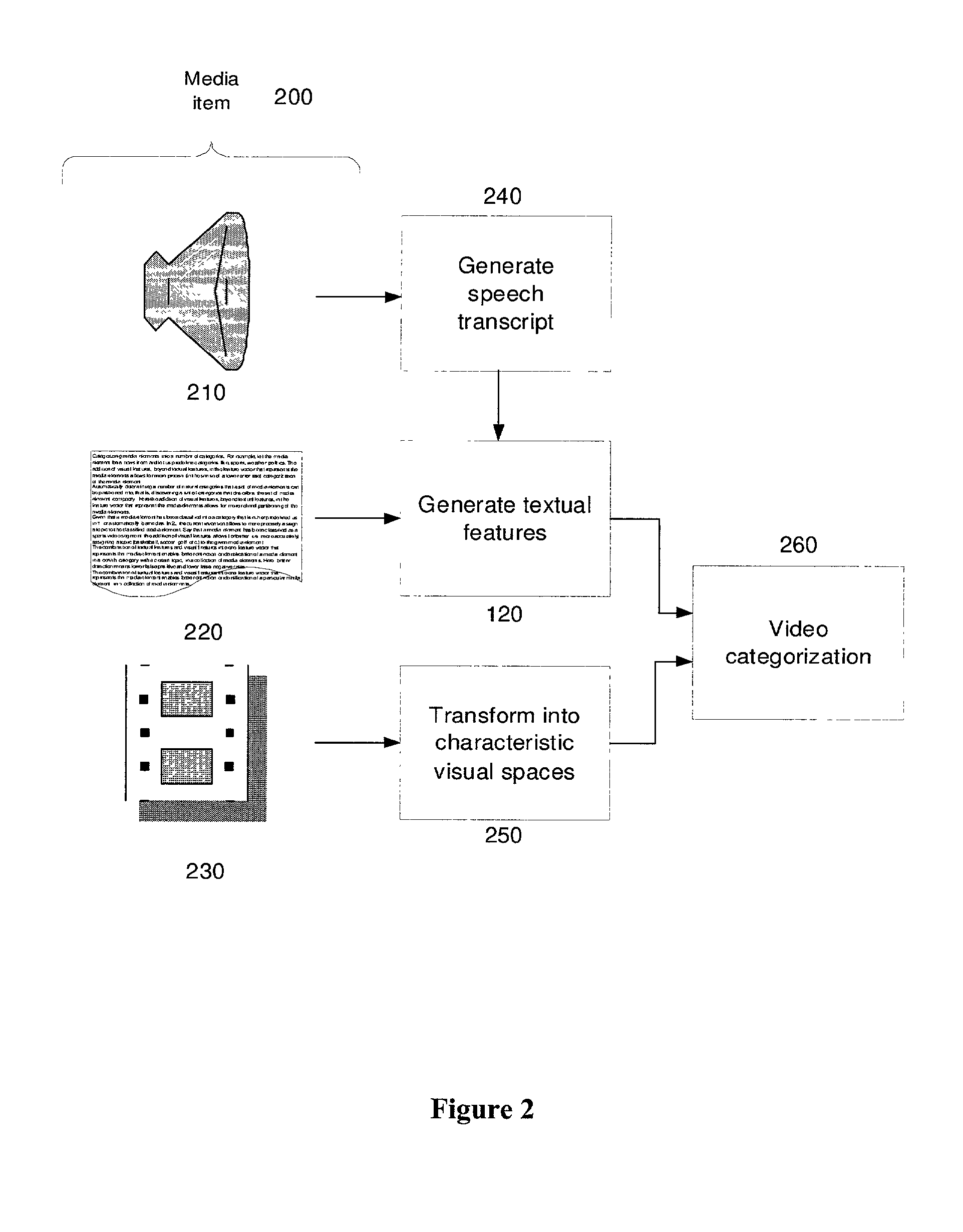Business method and apparatus for employing induced multimedia classifiers based on unified representation of features reflecting disparate modalities
- Summary
- Abstract
- Description
- Claims
- Application Information
AI Technical Summary
Benefits of technology
Problems solved by technology
Method used
Image
Examples
Embodiment Construction
[0123]This system categorizing media items has two distinct aspects. The first aspect is called the training phase which builds representations of the reference media items; the second phase is called the categorization phase, where instances media items are categorized. The training phase is an off-line process that involves processing of the reference media items to form a set of one or more categories. The categorization phase classifies a media item in a collection of such items by processing the media item to extract audio and visual features and using the media item class representations.
[0124]FIG. 1 shows a prior art flowchart for a system 100 for categorizing text documents. In step 110, a set of text documents is input to the system. Each text document is labeled as belong to a class S=c1, i=1, . . . , C. The classes S can be hierarchical, in the sense that each class S, can be recursively divided up into a number of subclasses, S=Ssubclass1, Ssubclass2, . . . , SsubclassN....
PUM
 Login to View More
Login to View More Abstract
Description
Claims
Application Information
 Login to View More
Login to View More - R&D
- Intellectual Property
- Life Sciences
- Materials
- Tech Scout
- Unparalleled Data Quality
- Higher Quality Content
- 60% Fewer Hallucinations
Browse by: Latest US Patents, China's latest patents, Technical Efficacy Thesaurus, Application Domain, Technology Topic, Popular Technical Reports.
© 2025 PatSnap. All rights reserved.Legal|Privacy policy|Modern Slavery Act Transparency Statement|Sitemap|About US| Contact US: help@patsnap.com



